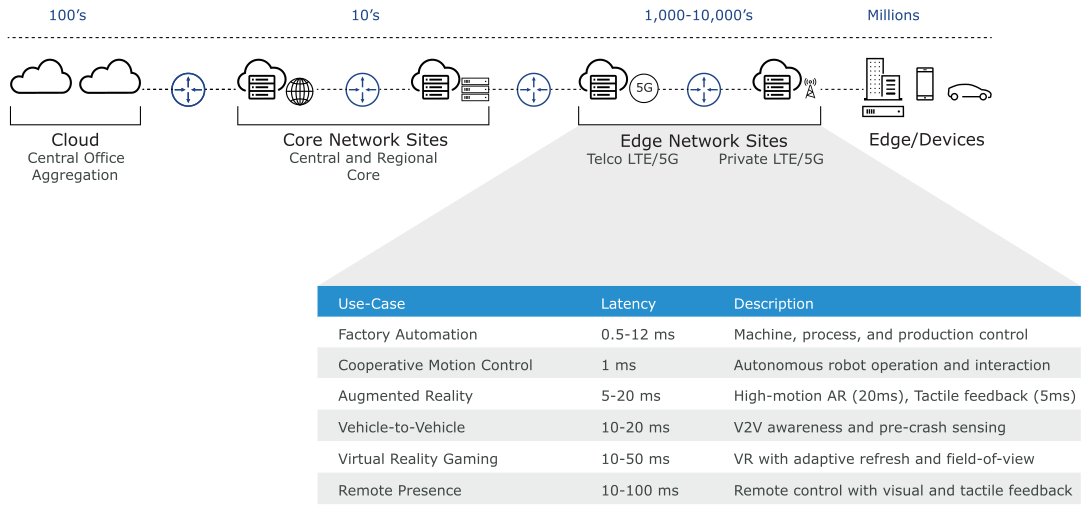This section describes the high-level deployment topology most commonly used by Telco CSPs.
Multi-Tier and Distributed Architecture
The 5G network must be dynamic and programmable to meet defined business objectives. Network operators need the ability to provision virtual network slices on-demand with QoS to honor SLA, provision flexible functions to increase capacity using industry-standard APIs and re-route traffic during congestion predictively and securely.
To handle the massive data traffic, 5G is designed to separate the user plane from the control plane and to distribute the user plane as close to the device as possible. As the user traffic increases, operators can add more user plane services without changing the control plane capacity. This distributed architecture can be realized by constructing the data center and network infrastructure based on hierarchical layers. The following figure is an example of a hierarchical 5G design.

Applications such as sensors and smart devices can reside in the network edge:
Far Edge: The far edge is the aggregation point for the geographically distributed radio sites hosting RAN and IP routing aggregators. It might also host mobile edge computing software to support private 5G use cases for factory automation, remote presence, and so on. Access mobility and user plane termination functions of the 5G core can also reside in the Network far edge. Generally, the type and number of applications that can be hosted in the Network far edge sites are limited by available power and space.
Near Edge: The near edge can be the aggregation point for far edge sites. It hosts many of the services as the far edge. It also serves as a peering point to access the Internet or other infrastructure-related cloud services.
The Central or core layer hosts infrastructure components such as Kubernetes Cluster Management, CICD pipeline, OSS, central monitoring tools, Kubernetes image repository, and so on. Depending on the 5G deployment, control plane functions of the 5G core, subscriber database, and so on, can only reside in the core or regional data center.
Service-Based Architecture
Containers gained immense popularity as a portable and lightweight virtualization solution for 5G Service-Based Architecture (SBA). Kubernetes is one of the components to consider when delivering Carrier-Grade Container as a Service (CaaS). A Carrier-Grade CaaS platform requires a complex ecosystem of solutions and functions to form a pre-set business and operating model. The modernization of the cloud infrastructure changes not only the business model in service agility and metered revenue models, but also challenges the silo operating model.
The basic principles of SBA are independent of vendors, products, and technologies. A service is a discrete unit of functionality that can be accessed remotely and acted upon and updated independently. SBAs improve the modularity of products. The software can be broken down into communicating services. With this approach, users can mix and match services from different vendors into a single product.